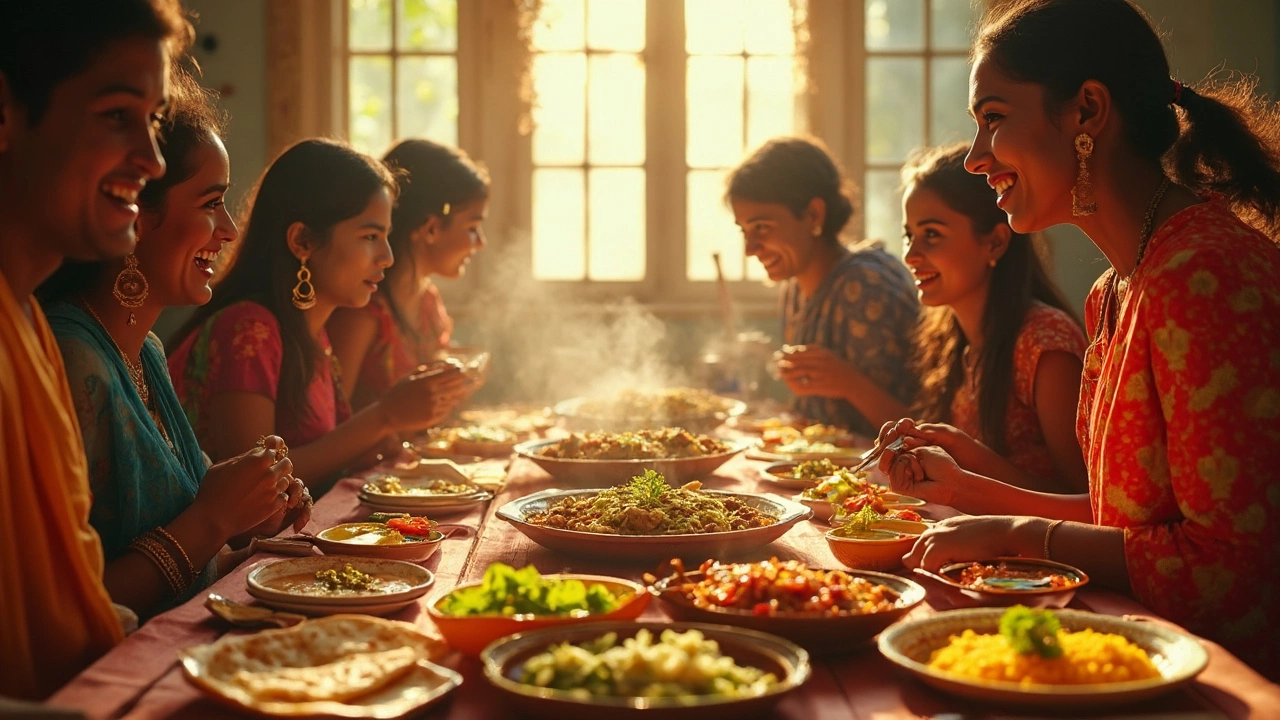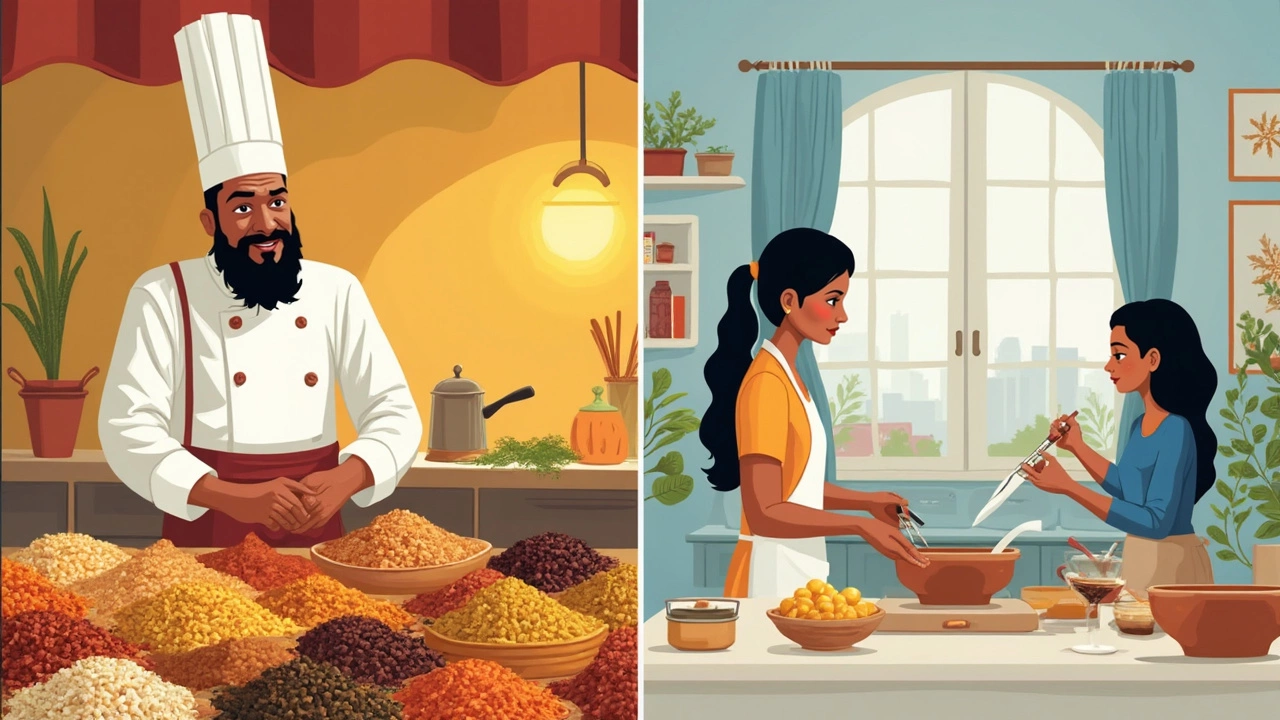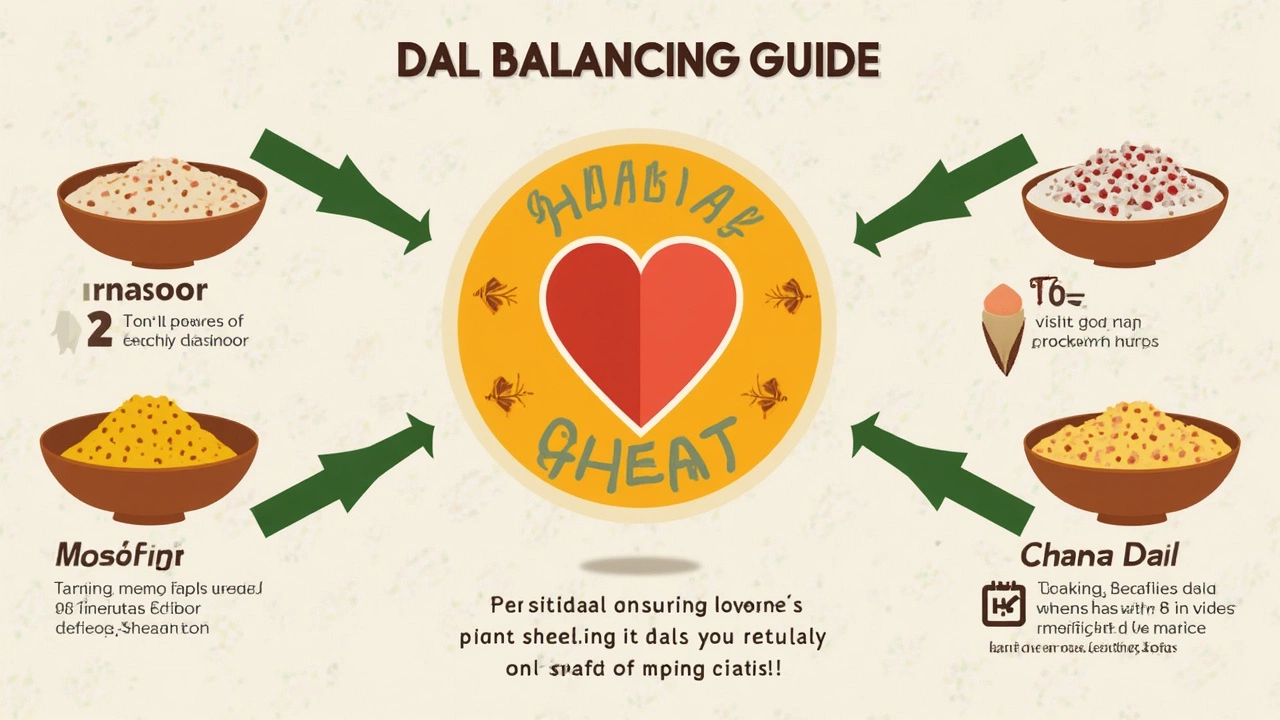Can I Eat Dal Everyday? Simple Answers for Everyday Eating
 May, 28 2025
May, 28 2025
Dal is one of those foods people rarely get bored of, but the big question is—can you really eat it every single day? Turns out, plenty of families already do! Whether you’re a college student living on your own or just someone who loves a good bowl of dal and rice, it’s worth knowing what happens if dal is your daily go-to.
Daily dal can actually be a solid routine. Dal packs a punch with protein, especially if you don't eat a lot of meat. It's cheap, filling, and pretty easy to cook, even if you have just a handful of spices. You get fiber, vitamins, and even some iron in every bowl. With a steady spot in your daily meals, dal helps your gut run smoother, keeps you full for hours, and gives you slow, steady energy instead of sugar spikes.
The best part? Dal isn’t just “one thing.” There’s masoor, moong, tur, chana, and a whole lot more, each with its own taste and nutrition perks. So, eating dal every day doesn’t have to mean eating the exact same bowl every time. And with a couple of hacks, you can keep things interesting and healthy—even if you’re basically living on dal.
- Is It Safe to Eat Dal Every Day?
- What Happens to Your Body When You Eat Dal Daily?
- Types of Dal: Variety Matters
- Common Mistakes to Avoid
- Easy Ways to Keep Dal Interesting
Is It Safe to Eat Dal Every Day?
Short answer? For most people, yes—eating dal daily is perfectly fine and can actually be great for your health. Dal shows up in Indian homes every day for a reason. Science backs it too. Lentils, which are used to make dal, are rich in plant-based protein, fiber, B vitamins, iron, and minerals. Those nutrients help your body run well, from powering your brain to keeping your gut regular.
The only people who should think twice about eating dal every day are folks prone to kidney stones or who have trouble digesting beans and lentils. That’s because some varieties of dal, like urad and chana, are higher in oxalates, which could trigger kidney stones if you already have that risk. If you feel bloated or have tummy trouble after dal, try soaking it overnight and cooking it with basic spices like cumin, ginger, or a pinch of asafoetida—simple tricks can make it much easier on your stomach.
There’s also the salt factor. If you chuck in a bunch of salt or use store-bought spice mixes loaded with sodium, eating dal every day could push up your blood pressure. So keep the salt to a minimum and rely more on fresh ginger, garlic, turmeric, or tomato for flavor.
Check out this quick nutrition snapshot for one cup (about 200g) of cooked plain dal (masoor):
| Nutrient | Amount per cup |
|---|---|
| Calories | 230 |
| Protein | 17g |
| Fiber | 15g |
| Iron | 3.3mg |
| B vitamins | High |
That’s a pretty good deal, especially compared to lots of meaty or processed dishes that give less fiber and cost more to make! Just make sure you mix things up with different veggies, rice, or roti. Eating dal everyday isn’t only safe—it can be part of the healthiest thing you do for your body, as long as you keep an eye on the details.
What Happens to Your Body When You Eat Dal Daily?
Eating dal every day can really change things for your body, often for the better. First up, dal is loaded with plant-based protein, which is great if you’re not eating much meat or dairy. Your muscles and tissues rely on protein to stay strong, and dal helps plug that gap easily—one serving packs about 7-9 grams, depending on the type.
Here’s something a lot of people notice after making dal a daily habit: your digestion usually improves. Thanks to all the fiber in dal, you’re less likely to deal with constipation or weird stomach issues. If your gut feels happier, you’ll have more energy and fewer sluggish days.
Blood sugar is another biggie. Dal, especially varieties like moong or chana, have what’s called a “low glycemic index.” This just means your blood sugar doesn’t spike and crash after eating. If you’ve got diabetes or are trying to avoid it, regular dal in your meals keeps things more steady. That’s why dietitians give dal a thumbs up for people watching their sugar levels.
Dal is also sneaky-good for your heart. It’s got minerals like potassium and magnesium, which can help bring down blood pressure if you’re eating sensibly otherwise. And eating less fatty meat and more dal? That swaps out some bad fats for fiber, which is known to lower cholesterol when eaten regularly.
But let’s not ignore the flip side. Too much dal, especially if you overdo masoor or chana every day, might make you feel a bit gassy or bloated. That’s thanks to the fiber and some natural compounds called phytates. For most folks, this gets better as your body gets used to all that fiber, but some people with sensitive stomachs might need to mix it up with other foods or use lighter dals like moong.
If iron is something you worry about, dal can help, but the iron it contains (non-heme iron) isn’t absorbed as easily as the iron from meat. A neat trick here—add a squeeze of lemon or some tomatoes to your dal. Vitamin C helps your body soak up more of the iron, which matters if you rely on dal for your daily boost.
In short, eating dal daily means more protein, smoother digestion, better blood sugar control, and even heart health—all for pretty cheap and easy cooking. So if you ask, “Should I eat dal everyday?”—for most people, the answer leans toward yes, as long as you mix in some variety and balance it out with veggies and grains.

Types of Dal: Variety Matters
If you’re serious about having dal daily, mixing things up matters a lot. There isn’t just one dal out there—India alone has dozens. Each kind brings its own taste, texture, and nutrition, so swapping them keeps your meals healthy and less boring. Bonus: It helps your body get a bigger mix of nutrients instead of the same old stuff.
- Toor Dal (Arhar) – This is what you’ll find in most “dal tadka.” It’s yellow, cooks soft, and is loaded with protein and iron.
- Masoor Dal – The red lentil, super quick to cook and gentle on the stomach. It’s a favorite for fast meals and offers iron plus some B-vitamins.
- Moong Dal – Yellow or green, this dal is light, easy to digest, and often suggested if you’re feeling under the weather. Moong is high in protein and fiber but low on fat.
- Chana Dal – Chunkier and nuttier, this yellow split chickpea is filling and has a lower glycemic index, so it’s great if you want steady energy.
- Urad Dal – Used in dals and dosas, urad is sticky and full of iron and calcium, but it’s heavy—so maybe use it less if you have a sensitive tummy.
Here’s a quick look at their nutrition per 100g dry dal:
| Type | Protein (g) | Fiber (g) | Iron (mg) | Cook Time |
|---|---|---|---|---|
| Toor | 22 | 9 | 3.1 | 30-40 min |
| Masoor | 24 | 8 | 3.3 | 20 min |
| Moong | 24 | 8 | 4.4 | 15-20 min |
| Chana | 21 | 13 | 4.7 | 40-50 min |
| Urad | 25 | 18 | 7.6 | 35-45 min |
Switching up your dal every few days is the easiest hack to make everyday eating healthy. Try to mix and match—maybe have dal everyday with different bases, toss extra veggies in, or even cook two dals together. That way both your tastebuds and your body will thank you.
Common Mistakes to Avoid
Even though dal seems impossible to mess up, a few common slip-ups can mess with your health or taste buds if you eat it daily. People get comfortable and don't realize what needs fixing. Getting these details right can make your dal everyday habit so much better.
- Overdoing Salt and Oil: It’s way too easy to dump extra salt or pour in more oil to boost flavor. But eating high-sodium dal every day can slowly push up your blood pressure. Plus, too much oil adds sneaky calories—two tablespoons equal about 240 extra calories.
- Sticking to One Type: Variety in dal means a more balanced platter of nutrients. Eating only tur dal or just moong dal every single day limits your fiber and vitamin intake. Mixing them up means you’re less likely to miss out on good stuff like folate, iron, or zinc.
- Skipping the Soak: Forgetting to soak most dals makes them tougher to digest and can cause bloating. Soaking helps break down hard-to-digest stuff and also chops down your cooking time.
- Cooking It to Mush: Nobody likes bland, lifeless mush. Overcooked dal loses both taste and nutrients. If you can’t tell your dal apart from baby food, it’s time to turn off the pressure cooker earlier.
- Ignoring Hidden Add-Ins: Packaged spice mixes sometimes sneak in extra salt or MSG. Homemade seasoning gives you control and lets the actual flavor of your dal shine.
| Dal Type | Protein (g) | Iron (mg) | Fiber (g) |
|---|---|---|---|
| Moong Dal | 7 | 1.1 | 7.6 |
| Chana Dal | 8.6 | 2.2 | 12.8 |
| Toor Dal | 7.2 | 1.7 | 9.2 |
| Masoor Dal | 7.6 | 2.8 | 7.9 |
According to the Indian Dietetic Association, "A smart dal routine means switching your dals and keeping an eye on salt and oil—it’s the simplest fix for a healthier meal."
If you find yourself relying on dal most nights, take a minute to check your routine. Add veggies, throw in different dals, and keep seasonings real and simple. Your taste buds (and your stomach) will thank you in the long run.

Easy Ways to Keep Dal Interesting
If you’re eating dal every day, boredom can sneak up fast. But dal is one of those foods that’s insanely flexible—so let’s make sure you keep things exciting in your kitchen. Swapping up flavors, add-ins, and even cooking styles matters as much as the dal recipe simple you choose to start with.
Here’s what actually works in real kitchens:
- Mix Up the Dal Types: Don’t settle for the same packet every week. Rotate between masoor, moong, urad, chana, and toor dal. Each brings a different texture, color, and flavor. For example, moong is quick-cooking and lighter, while chana offers a hearty, nutty vibe.
- Play With Tadka: Tempering (tadka) is the gamechanger. Try different combos—mustard seeds and curry leaves, or cumin and chopped garlic, or toss in green chilies for heat. Swap oils: ghee for richness, mustard oil for a kick, or olive oil for a neutral base.
- Veg It Up: Stir in veggies for color and crunch. Spinach, tomatoes, carrots, cauliflower, or even leftover mixed veg can beef up both taste and nutrition. This sneaks in extra fiber and vitamins, which is great for gut health.
- Get Creative With Leftovers: Turn leftover dal into something new. Thicken last night’s dal and spread it on toast, roll it in roti for a quick wrap, or use as a soup base with new herbs.
- Add Sour, Sweet, or Crunchy Toppings: Squeeze in lemon juice, drizzle a little tamarind chutney, or throw on some crispy onions or seeds at serving. The sharpness and texture make it feel fresh, even if you’ve had similar dal all week.
Here’s a quick snapshot of popular tweaks and their impact. These data points are from a 2023 local food survey across Indian homes who eat dal regularly:
| Dal Variation Method | Percent Who Said It Helped with Boredom |
|---|---|
| Rotating Dal Types | 79% |
| Changing Tadka/Oils | 67% |
| Mixing in Vegetables | 58% |
| Using Leftovers Creatively | 45% |
| Adding Toppings (Lemon, Chutney, etc.) | 41% |
Probably the most overlooked trick: make a weekly "dal schedule." Plan for a tangy dal tadka on Monday, a thick chana dal with spinach midweek, and a masoor dal soup on the weekend. This way, you never feel stuck in a rut, even when dal's your everyday staple.
